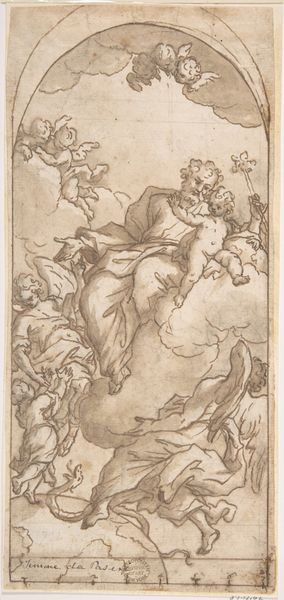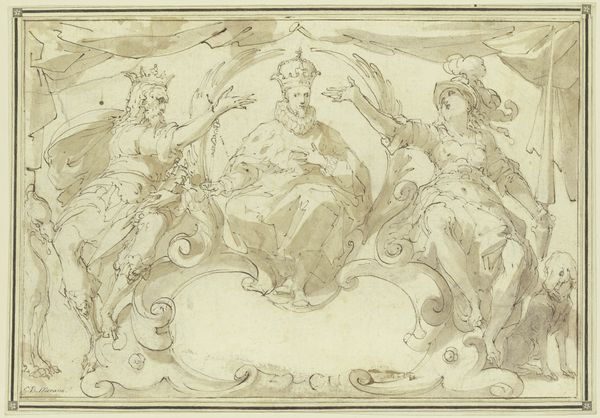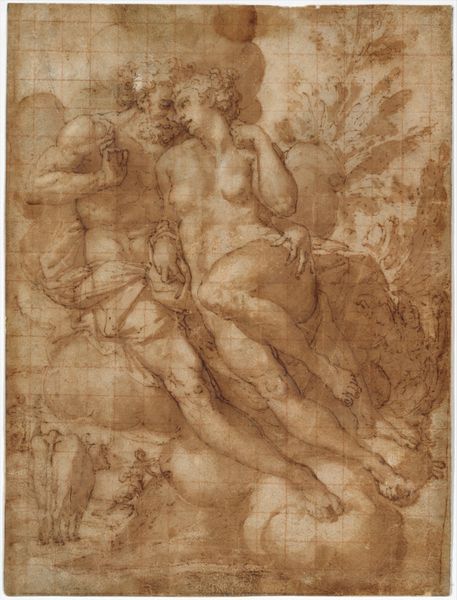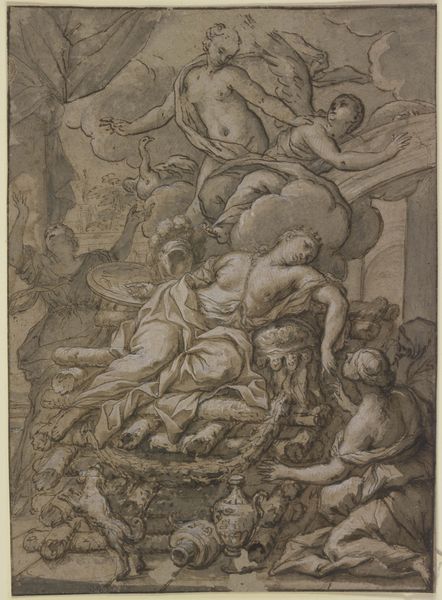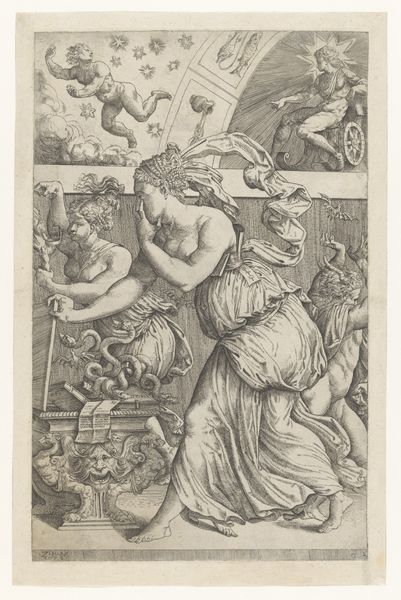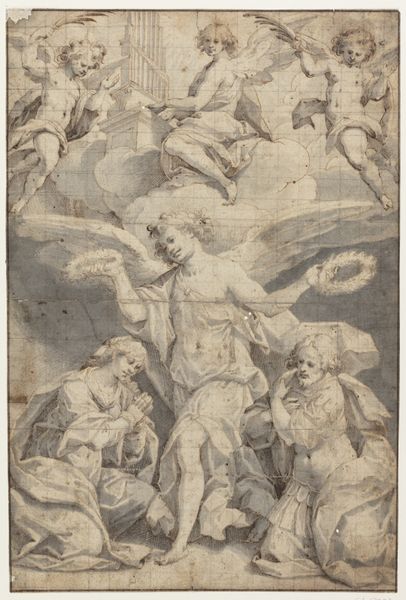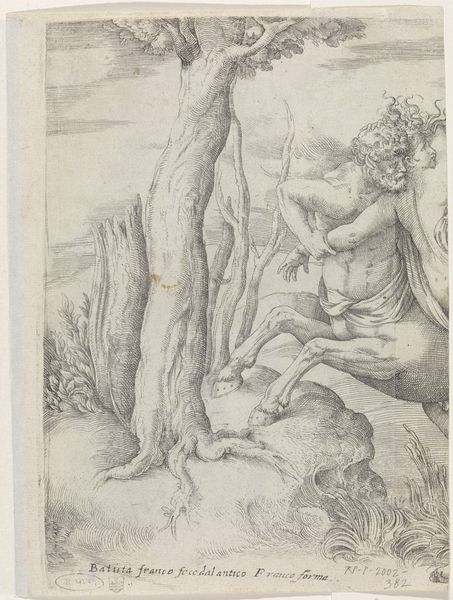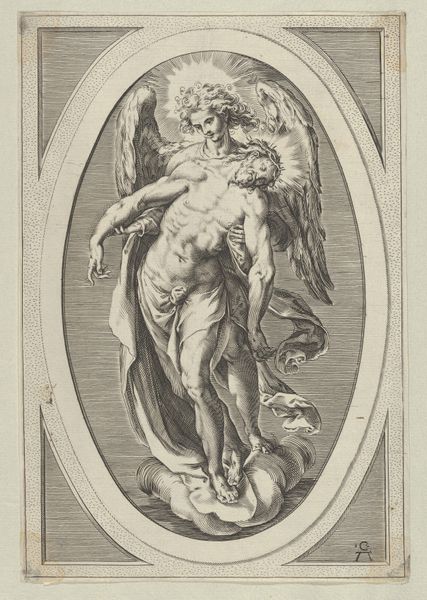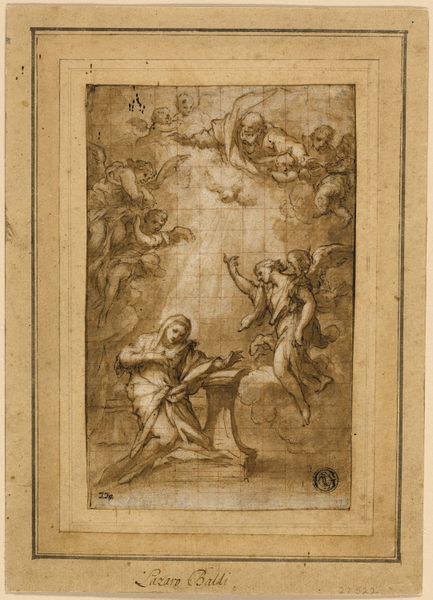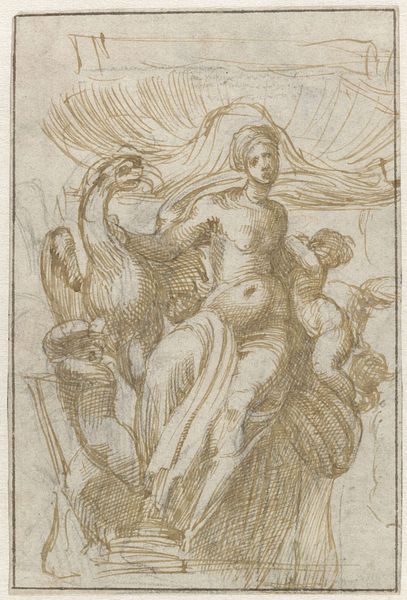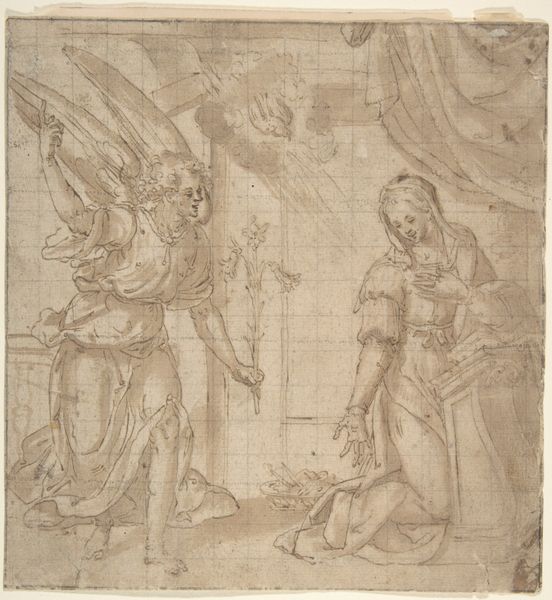
drawing, pencil
#
portrait
#
drawing
#
figuration
#
11_renaissance
#
cupid
#
coloured pencil
#
pencil
Dimensions: 8 9/16 x 5 1/4 in. (21.7 x 13.3 cm)
Copyright: Public Domain
Curator: Hans Werl's "Venus Triumphant," dating between 1580 and 1608, is a detailed drawing currently residing at the Metropolitan Museum of Art. The textures he achieves with what appear to be pencil and coloured pencil are simply remarkable. Editor: My immediate impression is one of classical privilege, even dominance. Venus is literally elevated, enthroned in the clouds, laden with signifiers of power. There’s a cool detachment to her gaze, a very particular aesthetic at play here. Curator: Indeed. Consider the meticulous construction: the underlying grid, the strategic placement of Cupid, arrow raised, poised above her. This pre-planning enhances the composition's forceful verticality, doesn't it? Editor: It does. I see her triumphant display—the extinguished torch suggesting dominance over passion, a sceptre symbolizing rulership, and two crowns, signs of earthly control all juxtaposed with the fleshy softness of mother and child. It is meant to project unwavering command, achieved, notably, with tools likely afforded by her social class and position. Curator: I am drawn to how the artist presents the thematic ideas within this contained space. The way Werl organizes the semiotics of conquest with form feels remarkably strategic. How he balances the light and shadow to enhance her three-dimensionality and power feels purposeful. Editor: Yes, it certainly provokes reflection. While celebrating an ideal of female power, we should also reflect on whose image of female triumph we celebrate here. Curator: A provocative thought. Viewing her in the context of idealized forms, of course, one cannot detach such an idealized vision from those holding tangible sociopolitical agency and control. Editor: Precisely, so "Venus Triumphant," more than just being about mythological prowess, makes a commentary of the period’s prevailing paradigms and the ways it presents female representation, beauty and influence. Curator: A striking, contextual lens to apply to our formal analysis of this impressive, evocative drawing. Editor: Indeed. Examining artwork with an eye towards context can greatly enhance, not detract from, the experience of a masterpiece.
Comments
No comments
Be the first to comment and join the conversation on the ultimate creative platform.

